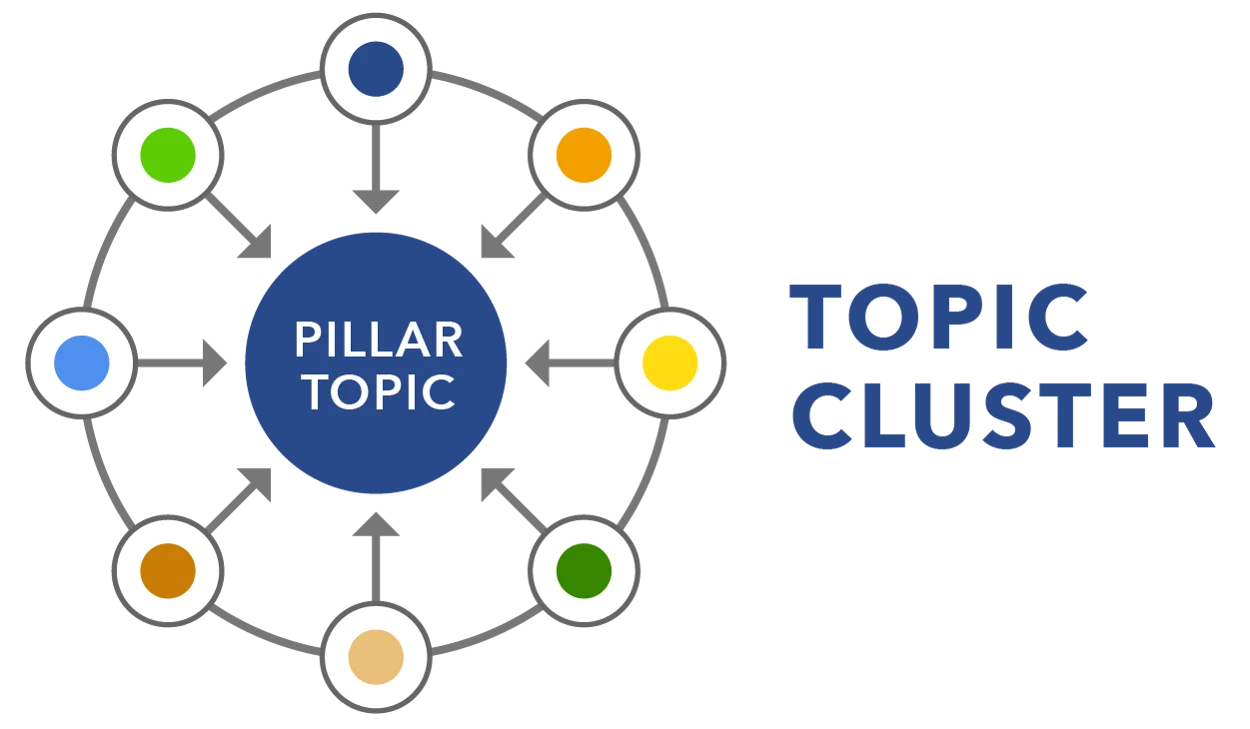In the fast-changing world of SEO, traditional keyword stuffing and random blog posting no longer cut it. Search engines—especially Google—are getting smarter, prioritizing topic authority over keyword density. If you’re looking to future-proof your SEO strategy, one powerful method is to build content clusters that establish your site as a trusted expert in your niche.
In this article, we’ll break down what content clusters are, how they build topic authority, and exactly how you can use them to rank higher in 2025 and beyond.
What Are Content Clusters?
A content cluster (also called a topic cluster) is a group of related web pages that revolve around one central topic. The structure typically includes:
- A pillar page: A comprehensive, authoritative piece of content that broadly covers the main topic.
- Several cluster pages: More specific articles or blog posts that delve into subtopics and link back to the pillar.
For example, if your pillar page is “The Ultimate Guide to SEO,” your cluster content might include:
- How to Perform Keyword Research in 2025
- On-Page SEO Techniques for Beginners
- Link Building Strategies That Work
- Local SEO Tips for Small Businesses
All of these cluster pages link back to the pillar page and often interlink with each other.
Why Topic Clusters Work in 2025?
Search engines are evolving to understand context, relationships between ideas, and user intent. Instead of rewarding sites that simply target a single keyword, they now favor those that demonstrate topic depth and authority.
Here’s why content clusters are effective:
-
Improved Crawlability & Internal Linking
Interlinking cluster content helps search engines crawl your site more efficiently and understand the hierarchy and relationships between your pages.
-
Better User Experience
When users find a cluster of articles addressing different angles of a topic, they’re more likely to stay on your site, increasing engagement and reducing bounce rates.
-
Signals Topical Authority
Google values sites that provide comprehensive answers to users’ queries. A well-built content cluster signals to the algorithm: “This site is the go-to resource for this subject.”
How to Build a Content Cluster?
1. Choose a Core Topic (Pillar)
Start by identifying a broad, evergreen topic that aligns with your audience’s interests and has long-term SEO potential. It should be something you want to rank for and can speak on with authority.
Example:
Core Topic = “Email Marketing for Beginners”
2. Conduct Keyword & Topic Research
Use tools like Ahrefs, SEMrush, Ubersuggest, or Google’s ‘People Also Ask’ to identify subtopics, FAQs, and long-tail keywords related to your pillar.
Subtopics for Email Marketing might include:
- How to Build an Email List from Scratch
- Best Email Marketing Tools in 2025
- Email Segmentation Strategies
- How to Avoid Spam Filters
- Writing High-Converting Email Subject Lines
3. Create the Pillar Page
Write a long-form (2,000+ words) comprehensive guide on your core topic. This should be an in-depth overview, touching briefly on all your subtopics, with links directing to cluster content for deeper reading.
4. Develop Cluster Content
Write individual blog posts on each subtopic, each focused on a specific keyword or question. Each one should link back to the pillar page and other related cluster articles when appropriate.
5. Use a Consistent URL Structure
Organize your content with a clean and logical URL structure. For example:
/email-marketing-guide/
/email-marketing-guide/list-building/
/email-marketing-guide/email-tools/
6. Optimize Internal Linking
Ensure every cluster article links naturally to the pillar and other relevant clusters. This builds context and strengthens SEO signals.
Bonus: Tools That Help You Create Content Clusters
- Surfer SEO: Helps optimize content and build clusters using NLP and SERP analysis.
- Frase.io: Assists in content briefs and identifying subtopics.
- ClearScope: Offers keyword insights and content grading.
- Notion or Trello: Great for planning and mapping out your content cluster strategy.
Common Mistakes to Avoid
- Creating a pillar without supporting content
- Thin or low-quality cluster content
- Weak or missing internal links
- Overlapping topics or cannibalizing keywords
Remember, the goal is not just to rank — it’s to build trust and expertise in your domain.
Final Thoughts
Content clusters are more than just an SEO trend — they’re a long-term strategy to position your site as an authority in your niche. By creating interconnected, high-value content around a core topic, you signal to search engines (and your audience) that you know your stuff.
Whether you’re running a blog, building a digital course, or managing an agency, mastering this strategy will help you stand out in the crowded digital landscape of 2025.

